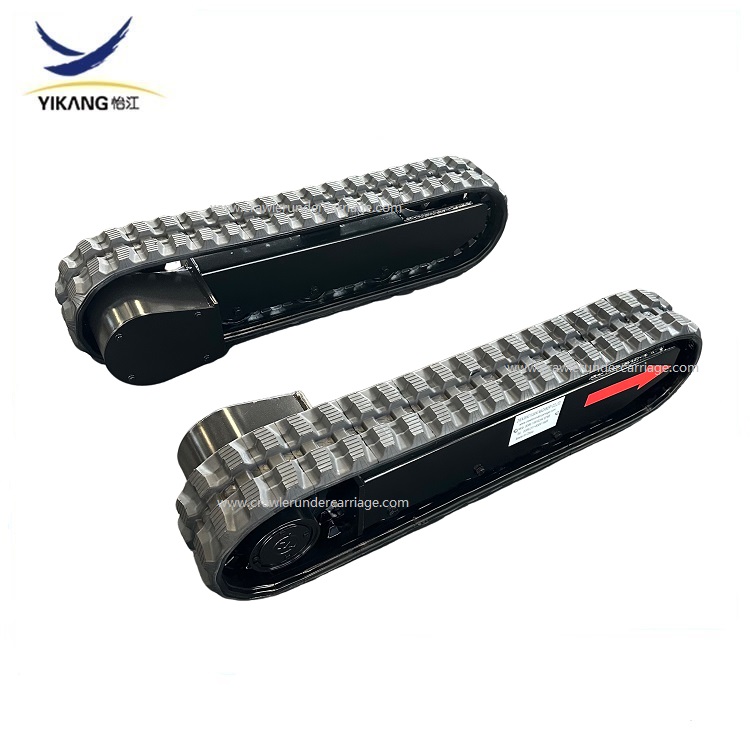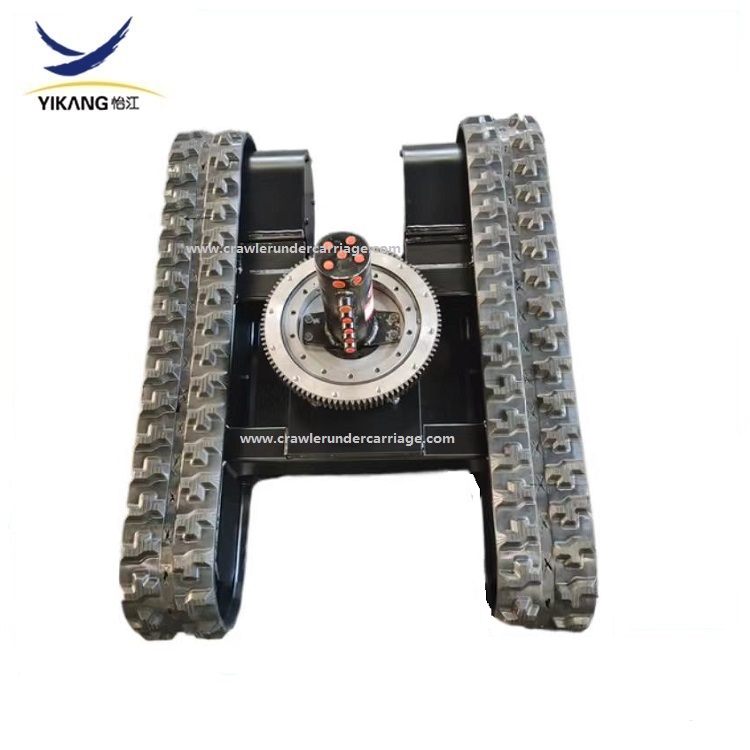In the constantly evolving field of machinery, small equipment is creating a big impact! In this field, what changes the game rules is the tracked undercarriage chassis. Integrating a tracked chassis into your small machinery can enhance your operation:
1. Strengthen stability: The tracked chassis provides a lower center of gravity, ensuring stability on uneven terrain. This means that even in challenging environments, your machinery can operate more safely and efficiently.
2. Improve maneuverability: The tracked chassis can travel on rough and soft ground, enabling your small machinery to access areas that wheeled vehicles cannot reach. This opens up new possibilities in construction, agriculture, and landscape beautification.
3. Reduce ground pressure: The tracked chassis has a large footprint and a uniform weight distribution, reducing interference with the ground. This is particularly beneficial for sensitive environments, helping to maintain ground integrity.
4. Multi-functionality: The tracked chassis can accommodate various attachments, making it suitable for various tasks - from excavation and lifting to transporting materials.
5. Durability: The tracked chassis is specifically designed to withstand harsh conditions, extending its lifespan, reducing maintenance costs, and minimizing downtime.
The track chassis indeed brings significant performance enhancements and application expansions to small robots, especially in terms of adaptability and functionality in complex environments, which can be regarded as a "blessing". Here are the core advantages and practical application values of the track chassis for small robots:
1. Breaking through terrain limitations and expanding application scenarios
**Complex terrain passability:The track chassis increases the contact area and distributes pressure to enable small robots to easily handle environments such as sandy, muddy, rocky, snowy, and even staircases that traditional wheeled robots find difficult to enter. For example:
--Disaster relief robots: Crossing obstacles in collapsed or collapsed sites to perform search and rescue tasks (such as the Japanese Quince robot).
--Agricultural robots: Steady movement in soft farmland to complete sowing or spraying operations.
**Steep slope climbing and obstacle crossing ability: The continuous grip of the track chassis enables it to climb slopes of 20°-35° and cross obstacles of 5-15cm, making it suitable for field surveys or military reconnaissance.
2. Enhancing stability and load capacity
**Low center of gravity design
Track chassis are usually lower than wheeled chassis and have a more stable center of gravity, making them suitable for carrying precision instruments (such as LiDAR, robotic arms) without tipping over.
**High load potential
Small track chassis can carry loads of 5-5000kg, sufficient to integrate various sensors (cameras, IMU), batteries, and operation tools (such as mechanical claws, flaw detectors).
3. Meeting low-speed and high-precision operation requirements
**Precise control
The low-speed and high-torque characteristics of the track are suitable for scenarios requiring precise movement, such as:
--Industrial inspection: Slow movement in narrow pipes or equipment spaces to detect cracks or temperature abnormalities.
--Scientific research exploration: Stable sample collection in simulated Martian terrain (similar to NASA's rover design concept).
**Low vibration operation
The continuous contact with the ground by the track reduces bumps and protects precision electronic components from shocks.
4. Modular and intelligent compatibility
**Fast expansion interfaces
Most commercial track chassis (such as Husarion ROSbot) provide standardized interfaces, supporting the rapid integration of ROS (Robot Operating System), SLAM (Simultaneous Localization and Mapping) algorithms, 5G communication modules, etc.
**Adapting to AI development
Track chassis are often used as development platforms for mobile robots, combined with deep learning vision systems (such as target recognition, path planning), applied in security patrols, smart warehousing, etc.
5. Typical application cases
**Disaster relief
The Japanese FUHGA robot uses the track chassis to search for survivors in post-earthquake ruins and transmit real-time images through narrow spaces.
**Polar scientific research
Antarctic scientific research robots are equipped with wide-track chassis to perform environmental monitoring tasks on the snow-covered ground.
**Smart agriculture
Fruit orchard robots (such as Ripe Robotics) use track chassis to autonomously navigate in rugged orchards, achieving fruit picking and disease and pest detection.
**Education/Research
Open-source track chassis such as TurtleBot3 are widely used in university laboratories to cultivate talents in robot algorithm development.
6. Future Development Directions
**Lightweighting and Low Power Consumption
Employ carbon fiber tracks or new composite materials to reduce weight and extend the range of operation.
**Active Suspension System
Adjust the tension of the tracks or the height of the chassis dynamically to adapt to more extreme terrains (such as swamps or vertical climbing).
- **Bionic Design
Imitate flexible tracks that mimic the movements of living creatures (such as snakes or insect joints) to further enhance flexibility.
The core value of the crawler chassis
The crawler chassis, through its capabilities of "all-terrain coverage + high-stability bearing", has solved the problem of small robots' movement in complex environments, enabling them to move from the laboratory to the real world and becoming "all-rounders" in fields such as disaster relief, agriculture, military, and industry. With the advancements in materials science and intelligent control technology, the crawler chassis will continue to drive small robots towards more efficient and intelligent development.










